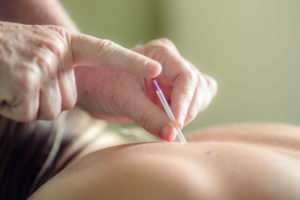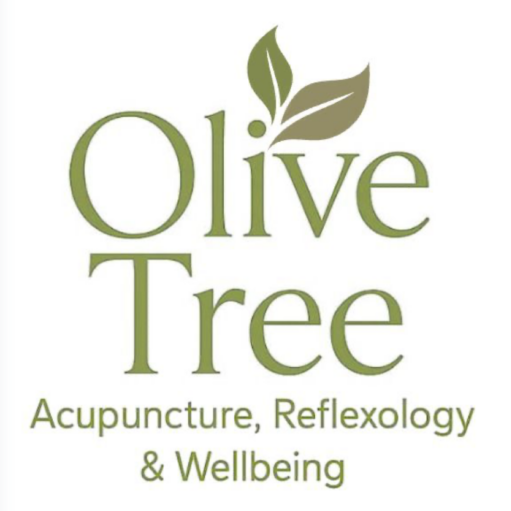
The Traditional Chinese theory explains acupuncture as a way of balancing the flow of energy (known as Qi, pronounced chee) through the body. It looks at the body as a whole, as well as the symptoms displayed in a holistic approach to healthcare. Developed over 2,000 years ago it is used to prevent, as well as recover from pain and ill health. It aims to promote natural healing and to restore balance. When signs and symptoms surface, it is an indication that something internally is out of balance. They are warning signs from the body alerting to something deeper going on.The goal is to restore the balance and strengthen the body so it is able to maintain homeostasis and live a healthy, strong, thriving life.
The theory behind acupuncture treatment is that the healthy functioning of the body is governed by the flow of QI (often translated as energy) through a system of channels under the skin. When this flow of Qi is impaired, illness occurs. The flow of Qi can be disrupted in many ways:
- emotional upset
- physical trauma
- poor diet
- overwork
- sedentary lifestyle
- seasonal changes
- excessive activity
- stress
- anger
Blockages in the flow of Qi can manifest as pain, hot or cold sensations, or colour changes. These signs, along with pulse and tongue diagnosis can help determine which points and channels are most suitable for treatment. Treating the patient as an individual is vital in successfully assisting the body to rebalance itself. The acupuncturist selects a course of treatment and selection of points to be needled. This then helps to restore the balance and to help resolve the illness.
Does acupuncture work?
As for effectiveness, acupuncture has been widely studied, and a growing consensus of medical experts admit that it does work even if they can’t quite explain how. Don’t let that worry you, though; there are a number of drug effects that can’t be explained, too.
Evidence shows that acupuncture does affect pain levels and can help a number of conditions. Only recently has acupuncture being prescribed in the Western world and still with much reluctance. Although the practice is proven to be an effective alternative to many prescription drugs. More and more scientific research is acknowledging that acupuncture is beneficial for the treatment of menstrual and menopausal symptoms, to manage pain, to ease the side effects of chemotherapy and the symptoms of fibromyalgia, to treat migraines, and to strengthen the immune system. In fact, a newer study published in the Archives of Internal Medicine, collected data from 18,000 participants who took part in acupuncture studies. Findings showed that acupuncture should be considered a valid treatment for all types of chronic pain (i.e., arthritis, chronic back pain, anxiety, the effects of chemotherapy, and in the treatment of obesity). In the United Kingdom, the National Institute for Health and Care Excellence (NICE) approves doctor-prescribed acupuncture for chronic tension headaches and low back pain.
Some of the conditions that acupuncture is used to treat include:
- Low back pain
- Anxiety
- Constipation
- Insomnia
- Migraines
- Nausea
- IBS
- Infertility
- Osteoarthritis
- Fibromyalgia
- many more…
As with all alternative healing methods, it’s important to find a registered practitioner before you begin. They’ll let you know how they can help with your symptoms and what to expect from your appointment. I have undergone 4 years at The College Of Naturopathic Medicine in London to achieve my qualification as a Licensed Acupuncturist, which included over 400 hours clinical practise. I have also attended many advanced courses and continue to add to my training every year. I also did a postgraduate course in China to get a real feel for acupuncture in its home land.
Here are a few key points:
- Each session lasts around 40 to 60 minutes, and you’ll need a series of sessions depending on your ailment
- The acupuncturist will ask you a number of questions about your health, lifestyle, medical history etc
- Your pulses will be felt and a picture of your tongue taken for further diagnosis
- You may be asked to sit or lie down and to remove certain clothing around the area to be treated
- The treatment starts by inserting needles into specific acupuncture points throughout the body
- Around 1-16 needles will typically be used
- You may feel tingling or a slight ache from the needles – let your acupuncturist know if you feel pain
- Acupuncture also includes other techniques such as cupping, gun sha, moxibustion or acupressure.
WHAT ARE THE RISKS?
Any treatment comes with certain risks. With acupuncture, short term risks include soreness and bruising around the areas where the needles are inserted. If you are pregnant your acupuncturist knows which points are safe and will adapt the treatment accordingly. To avoid any cross contamination needles are pre sterilised and are “one time use only”. After treatment they are then disposed of in a sharps box.
Acupuncture is a safe and effective form of medicine that can treat both chronic and acute conditions. It can be used as a sole treatment or it can be used alongside conventional medicine to increase effectiveness.
DOES IT HURT?
Many first time patients are actually surprised by how relaxed they feel during a session. This is because the acupuncture needles used are extremely thin and flexible for precise insertion. On the whole the treatment should be quite painless and only ever a sharp sensation around the needle when using a stimulating technique.
HOW OFTEN WILL I NEED TREATMENT ?
At your first visit your treatment plan will be discussed according to your requirements. A course often begins with weekly visits followed by spacing out the treatments once improvement has been established. Preventative acupuncture also works very well as a maintenance program and many patients come on a monthly basis to stay well.
Questions
If you have any other questions please email them on to me – olivetreebeautyuk@gmail.com


